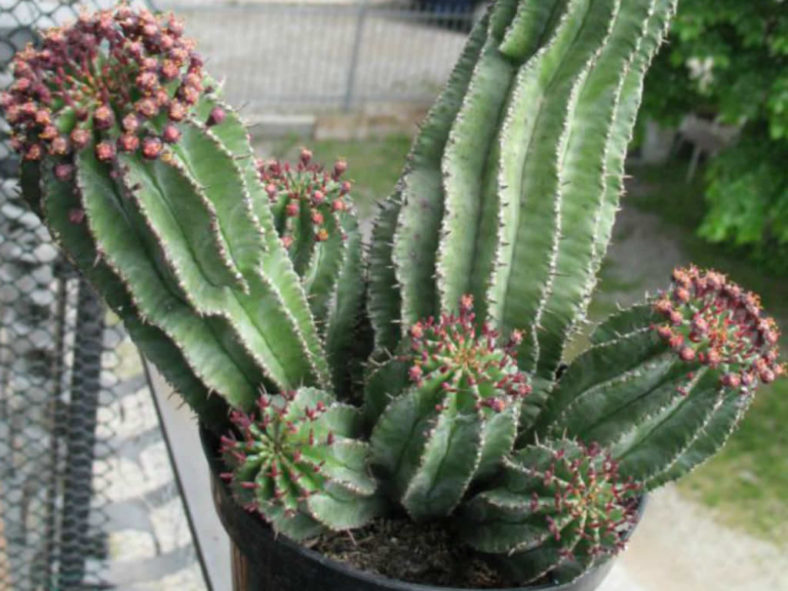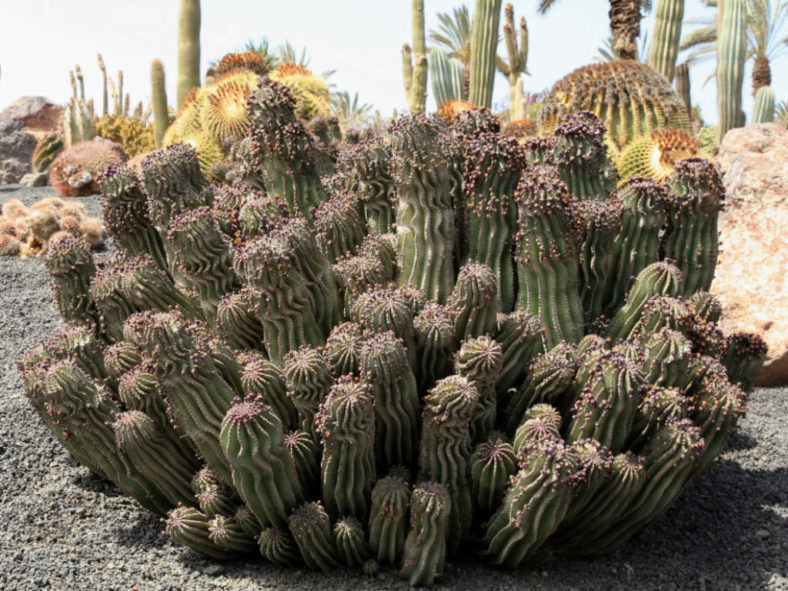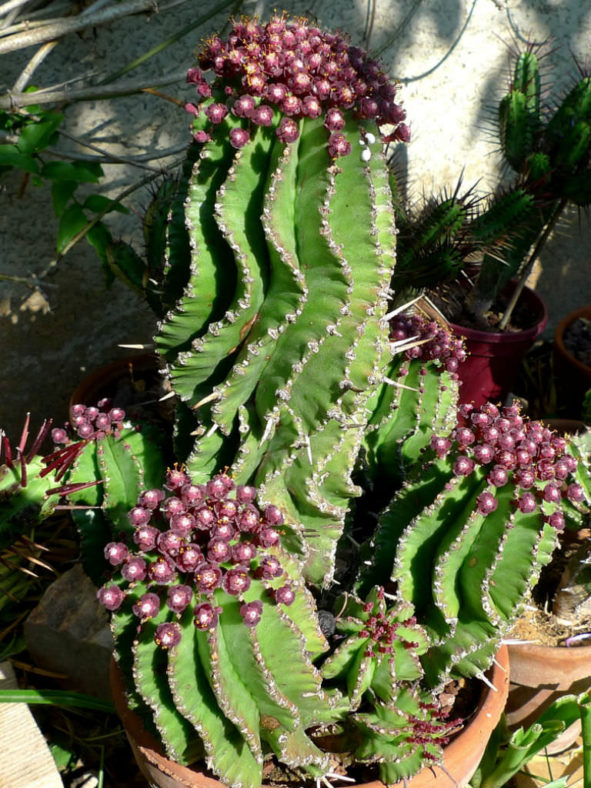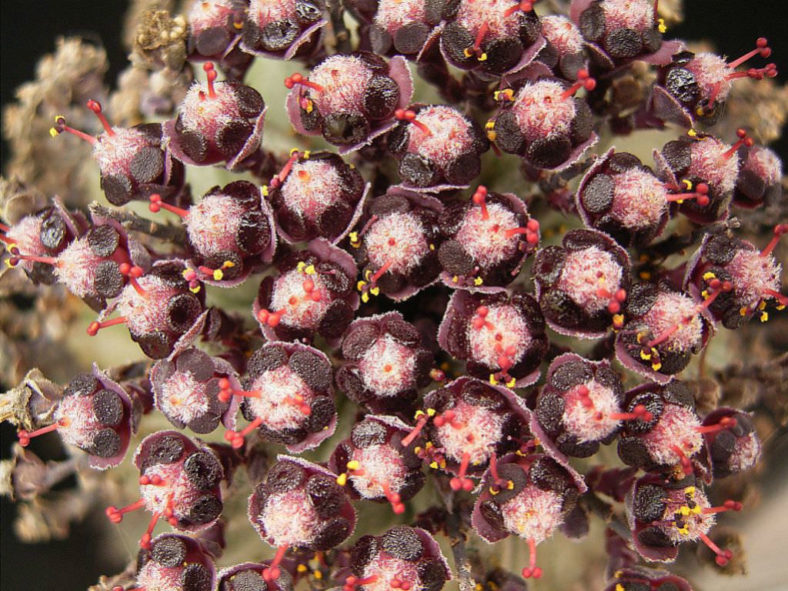Scientific Name
Euphorbia polygona Haw.
Common Name(s)
African Milk Barrel
Synonym(s)
Euphorbia polygona var. polygona
Scientific Classification
Family: Euphorbiaceae
Subfamily: Euphorbioideae
Tribe: Euphorbieae
Subtribe: Euphorbiinae
Genus: Euphorbia
Origin
Euphorbia polygona is native to South Africa. It occurs on gravelly flats to stony slopes among karroid scrub from Seweweekspoort and Calitzdorp to Makhanda, also known as Grahamstown.
Description
Euphorbia polygona is a much-branched succulent with grey-green stems with obscure tubercles fused vertically into 7 to 20 prominent, wing-like angles. The cylindrical-clavate stems can grow up to 6.6 feet (2m) tall and 6 inches (15 cm) in diameter. The spines can measure up to 1.6 inches (4 cm) long and arise in the axil of each tubercle, usually in a group of 2 to 5. The tiny leaves are soon deciduous.
Many cyathia appear around the apex of each stem, 1 to 3 on each persistent peduncle in the axil of the tubercle. They can reach up to 0.3 inches (0.7 cm) in diameter and have five entire red to dark purple glands. The fruits are densely hairy capsules, about 0.25 inches (0.6 cm) in diameter, and have one seed in each cell. This species is dioecious, with male and female flowers occurring on different plants.

Hardiness
USDA hardiness zones 9b to 11b: from 25 °F (−3.9 °C) to 50 °F (+10 °C).
How to Grow and Care
Euphorbias are very easy to care for. These plants require a little pampering to become established, but once they are, they are self-sufficient. In fact, more die from too much care and watering than from neglect. Euphorbias need well-draining soil and lots of sunlight. They are not particular about soil pH but cannot tolerate wet soil. Unlike most succulents, Euphorbia does not handle long periods of drought well. It may need weekly watering during the summer. Water whenever the soil is dry several inches below the surface. Water deeply, but don't let them sit in wet soil, which can cause root rot. Add some organic matter or fertilizer to the planting hole. Feed with a half-strength fertilizer monthly if you are growing them in containers or your soil is poor.
These succulents can be grown from seed, but they can be difficult to germinate (or even find). They are usually propagated by cuttings. This can be tricky because of the exuding sap. A rooting hormone is recommended for Euphorbias. They tend to grow problem-free, but a few pests and diseases are to be alert for.
Learn more at How to Grow and Care for Euphorbia.
Varieties and Cultivars
Links
- Back to genus Euphorbia
- Succupedia: Browse succulents by Scientific Name, Common Name, Genus, Family, USDA Hardiness Zone, Origin, or cacti by Genus
Photo Gallery
Click on a photo to see a larger version.


